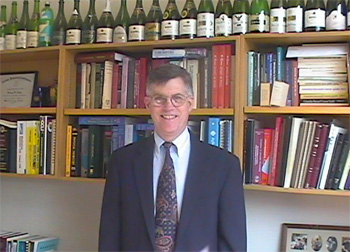


Department of Chemistry and Columbia Radiation Laboratory
Columbia University
3000 Broadway, MC 3109
New York, NY 10027
Phone: (212) 854-4162
Fax: (212) 854-8336
Post-Doctoral Fellow, M.I.T., 1964-1966
Ph.D., Harvard University, 1965
M.A., Harvard University, 1962
B.S., Yale University, 1960
As a graduate student at Harvard University from 1960-1964, George Flynn studied nuclear relaxation processes in simple fluorocarbons under the direction of Professor John D. Baldeschwieler, and also investigated rotational relaxation of gases using microwave double resonance techniques under the direction of Professor E. Bright Wilson, Jr. He received his Ph.D., from Harvard Unversity in 1965 and for two years (1965-1966) he did postdoctoral work in the Optical Maser (Laser) research group in the Physics Department of the Massachusetts Institute of Technology under the direction of Professor Ali Javan. His work at M.I.T. consisted of the development of Q-switching techniques in molecular gas lasers and the use of these techniques to study molecular vibrational relaxation processes. In 1967 he joined the staff of the Columbia University Chemsistry Department as an Assistant Professor, became an Associate Professor in 1972, and Professor in 1976. He was appointed Thomas Alva Edison Professor in 1986. In 1979 he was appointed Director of the Columbia Radiation Laboratory which comprises a small group of interdisciplinary scientists (Applied Physics, Chemistry, Physics, and Electrical Engineering) working on problems of mutual interest in the general areas of quantum electronics, microelectronics, and materials science. His research interests are concerned with the application of laser devices to the study of molecular problems of chemical interest such as vibrational and rotational relaxation processes in gases and solid matrices, laser initiated chemical reactions, laser photofragmentation and energy transfer phenomena involving "super fast" atoms, the dynamics of combustion processes, optically pumped molecular lasers, electronic relaxation of molecules trapped in rare gas matrices, laser isotope separation methods, laser temperature-jump techniques applied to problems of chemical interest, and scanning tunneling microscope studies of the dynamic physical, chemical and optical properties of surface adsorbates.